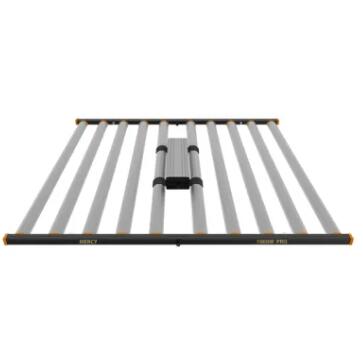What is an LED grow light
2023-10-30
An LED (Light Emitting Diode) grow light is an artificial lighting system designed specifically for stimulating the growth and development of plants, particularly in indoor or controlled environments. LED grow lights use energy-efficient, semiconductor diodes to produce light in a spectrum that supports photosynthesis and plant growth.
Key characteristics of LED grow lights include:
1. Customizable Spectrum: LED grow lights can be designed to emit specific wavelengths of light, allowing growers to tailor the light spectrum to the needs of different plant species and growth stages.
2. Energy Efficiency: LEDs are highly energy-efficient, producing more light with less heat compared to traditional lighting technologies like incandescent or high-intensity discharge (HID) lamps. This makes them cost-effective and suitable for indoor growing.
3. Low Heat Emission: LED grow lights emit significantly less heat, reducing the risk of heat stress or damage to plants and the need for extensive cooling systems.
4. Long Lifespan: LED diodes have a longer lifespan compared to traditional bulbs, resulting in reduced maintenance and replacement costs.
5. Compact and Lightweight: LED grow lights are often compact and lightweight, making them easy to install and adjust in various indoor gardening setups.
6. Precise Light Control: They offer precise control over light intensity, spectrum, and timing, allowing for customized lighting schedules and conditions.
7. Reduced Environmental Impact: LED grow lights are known for their energy efficiency, contributing to reduced energy consumption and environmental impact in indoor agriculture.
8. Versatility: LED grow lights are suitable for a wide range of applications, including growing vegetables, herbs, flowers, and even ornamental plants, in indoor gardens, greenhouses, and vertical farming systems.
9. Minimal Light Pollution: The directional nature of LEDs helps minimize light spillage and light pollution, making them suitable for urban farming and areas where light control is essential.
10. Remote Monitoring: Many LED grow lights can be controlled and monitored remotely through digital interfaces, allowing growers to manage their lighting systems from a distance.
The choice of LED grow light depends on factors like the specific plants being cultivated, growth stage, growing environment, and budget. These lights have gained popularity in the agriculture and horticulture industries due to their efficiency, versatility, and ability to optimize plant growth.



